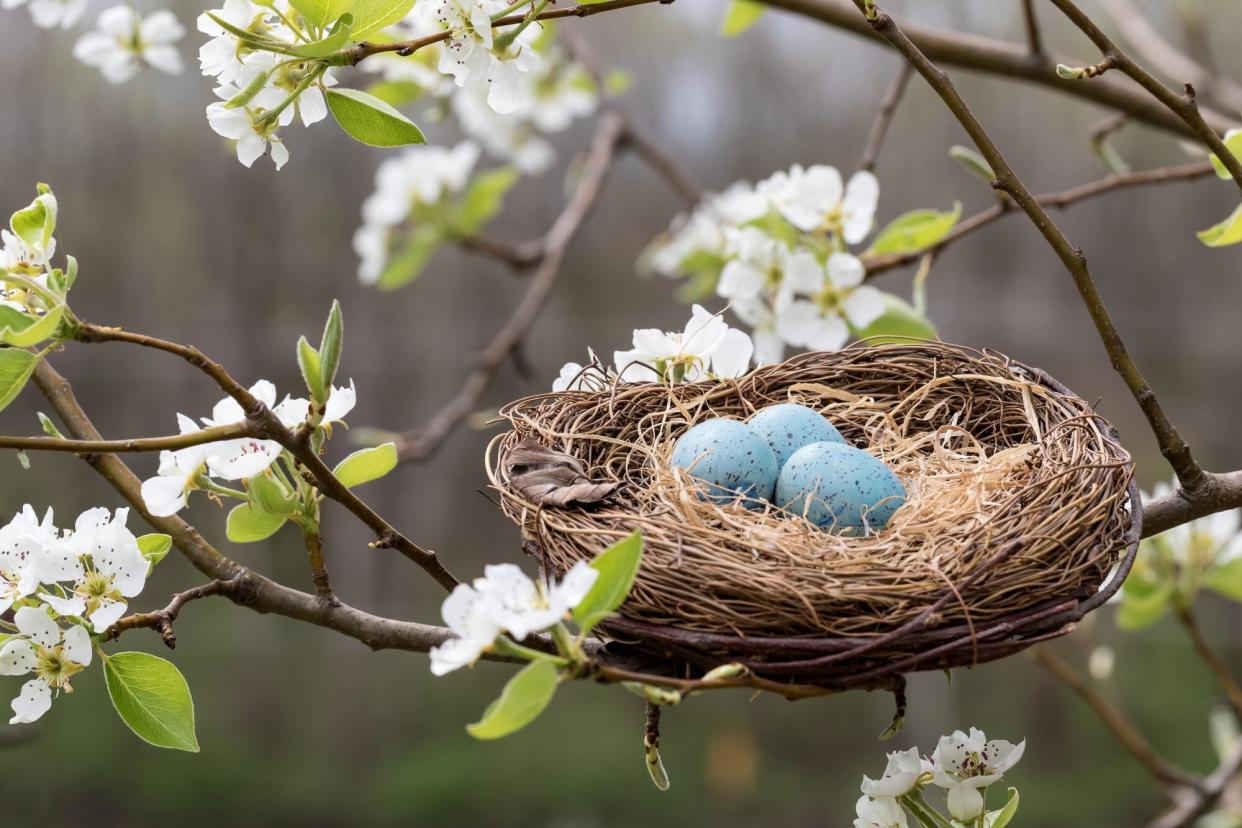Birds are laying eggs earlier than ever before. Here's why, according to scientists.

Marcia Straub / Getty
Bird watchers love to see their favorite avians indulge in their yard's feeder or make a splash in their bird bath before taking flight again. When we begin to see these birds at the top of the warm-weather season, however, might be in flux. According to a new study, birds are migrating to different areas around the country earlier than ever before. In turn, they are also laying eggs sooner, the Washington Post reports. John Bates, the curator of the division of birds at Chicago's Field Museum, told the outlet that chicks from Killdeer eggs, which take nearly 25 days to hatch, were born in late April—one month ahead of their original hatch timeline 100 years ago.
Bates and his fellow scientists published these findings in the Journal of Animal Ecology, which also highlighted the nesting behaviors of 72 bird species across the midwest. As for their main discoveries from this study? Researchers found that one-third of birds are actually laying eggs earlier—about 25 days earlier on average, to be exact—and global warming is likely the cause. As an example, the scientists noted that the yellow-billed cuckoo, native to South America, is making the trek back to the United States sooner because the caterpillars they feed on are coming out earlier in the spring. "What this highlights is that there is a level of resilience in these birds in terms of tracking stuff, with the really critical [caution] that we need to keep monitoring," Bates said.
Related: Science Says Being Surrounded by Birds Can Make You Happier
To uncover these habits of various bird species, the researchers dug into 20,000 sets of historic egg collections, going all the way back to 1872, and compared them to recent ones. A set is comprised of eggs from one nest laid by the same female bird. The team believes that their nature findings will help researchers understand how to protect birds in the future and other wildlife. For example, they learned that some birds, such as the American robin, are actually adapting to climate change. Bates noted that this species' population is steadily on the rise; the average date when they lay their eggs is actually later than usual, per historic tracking.
